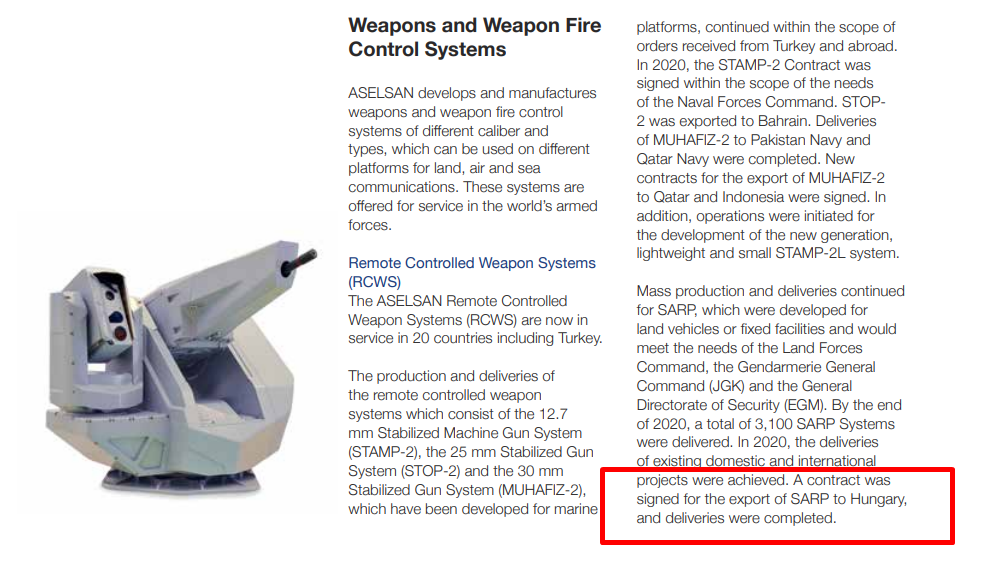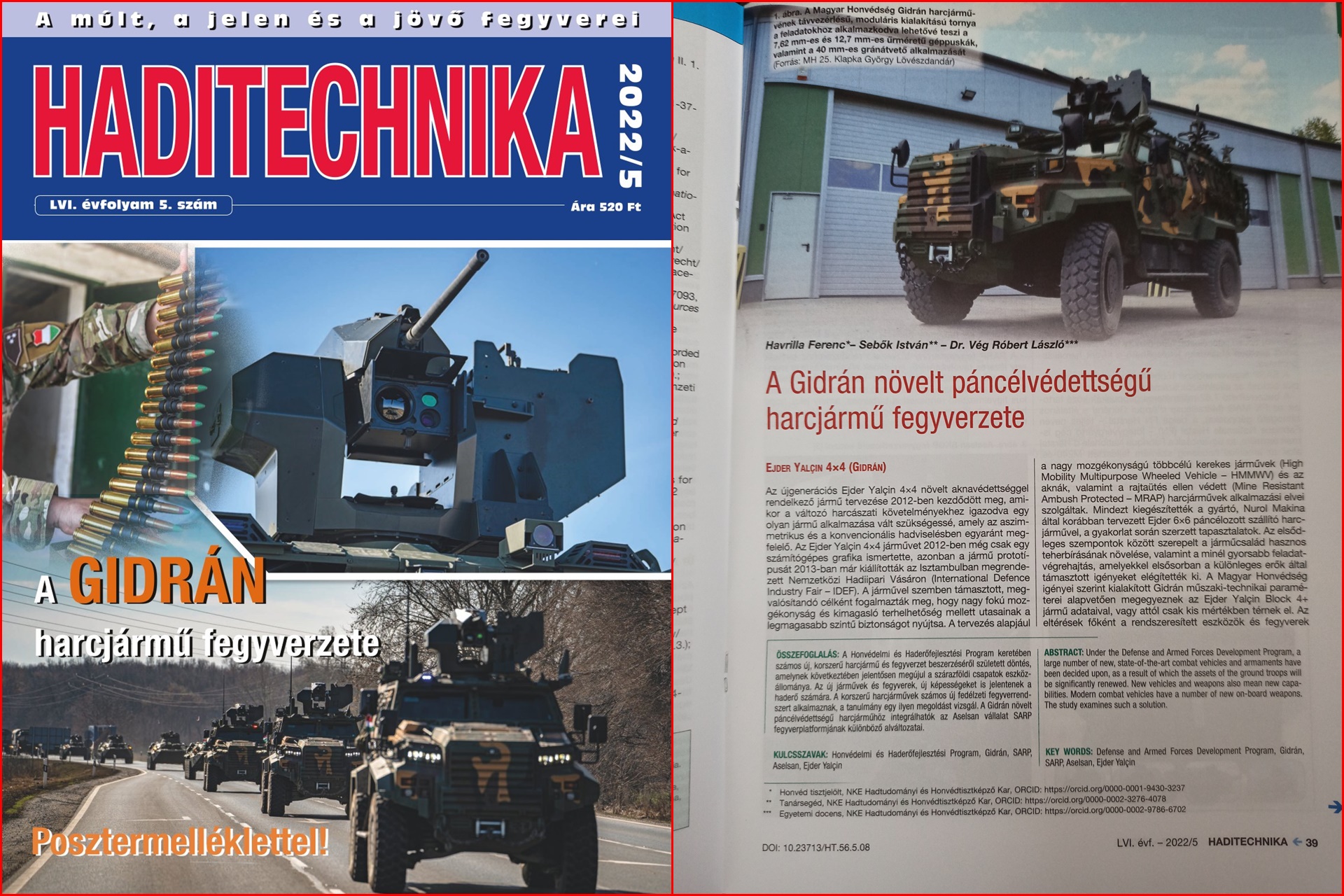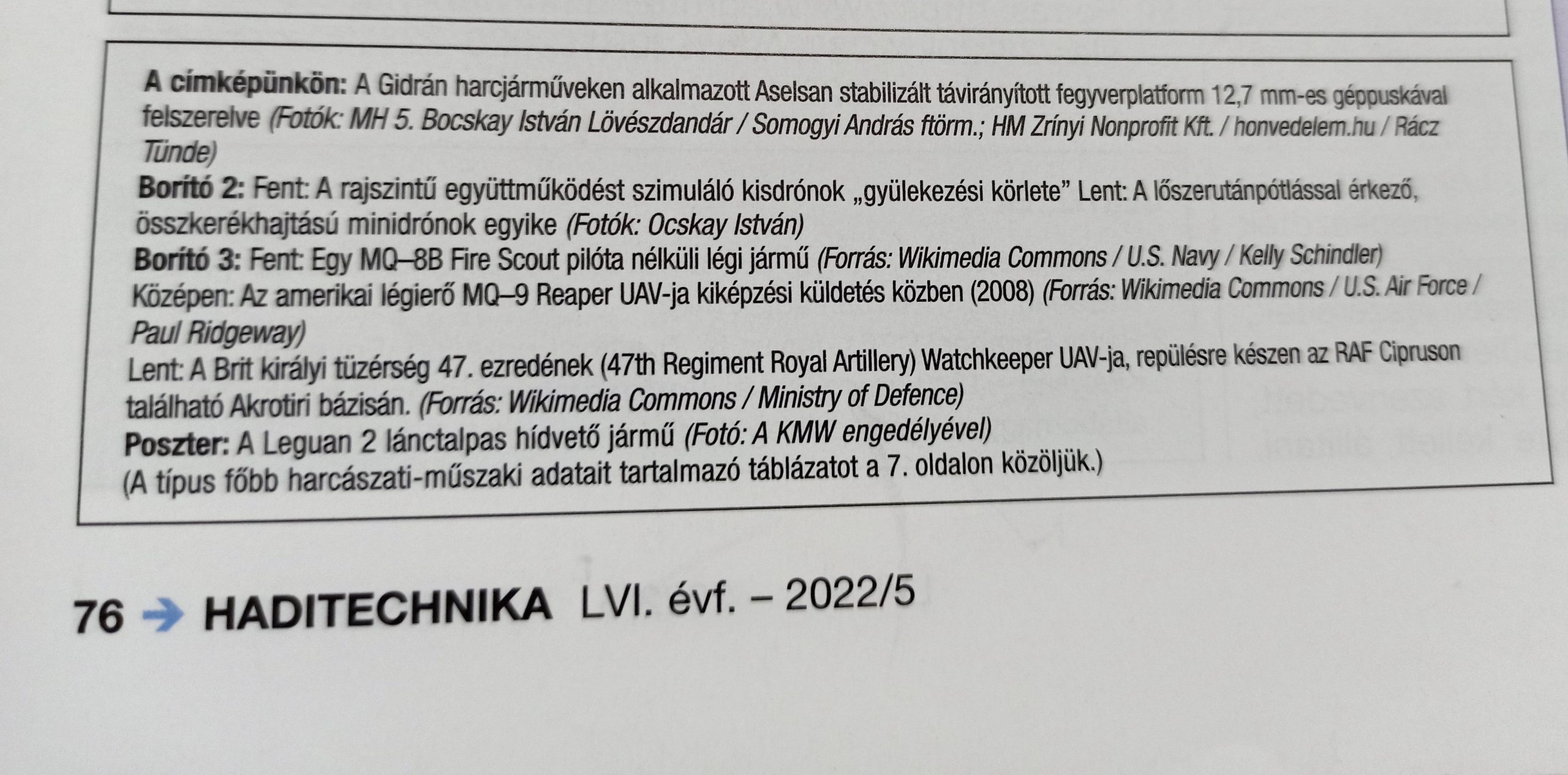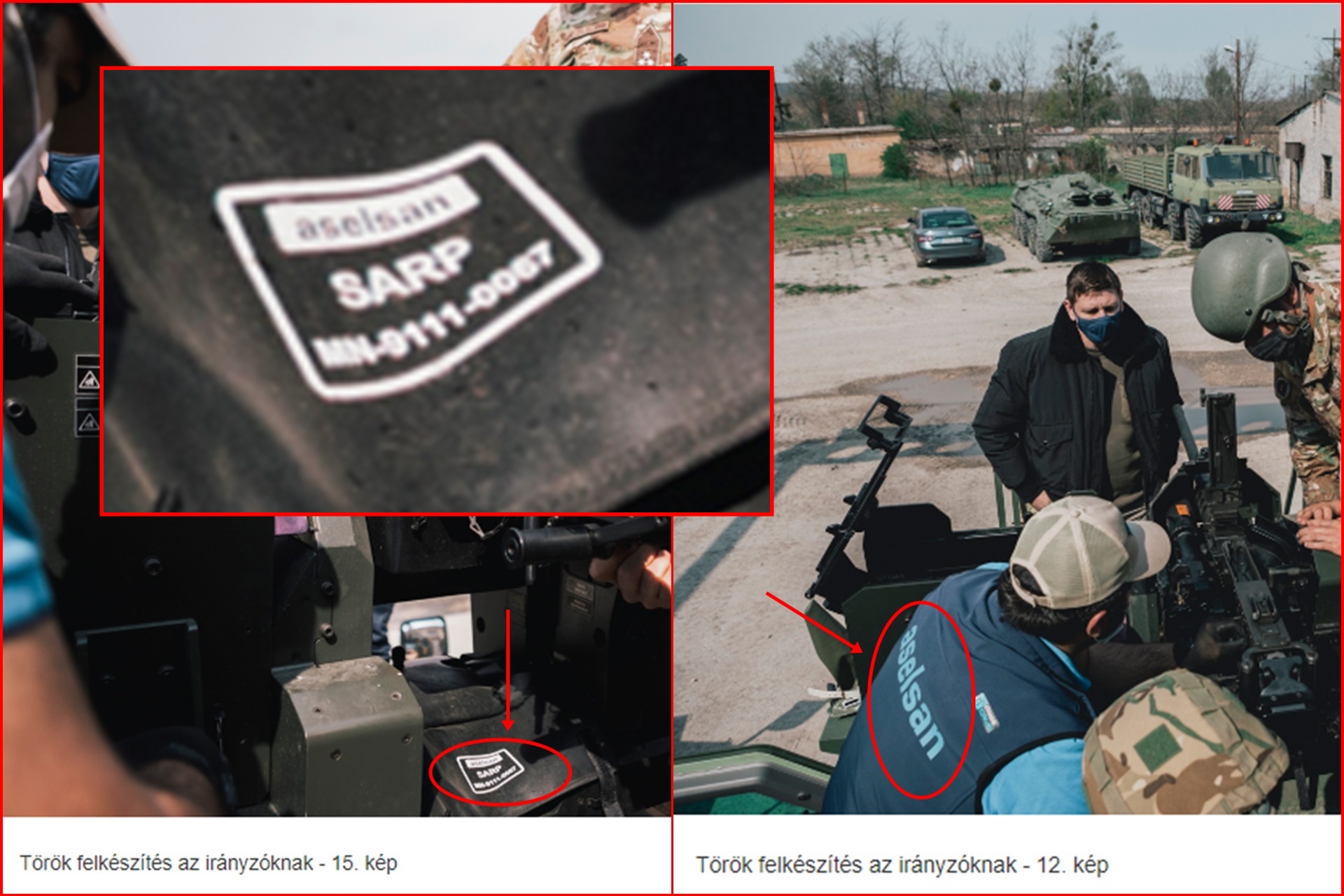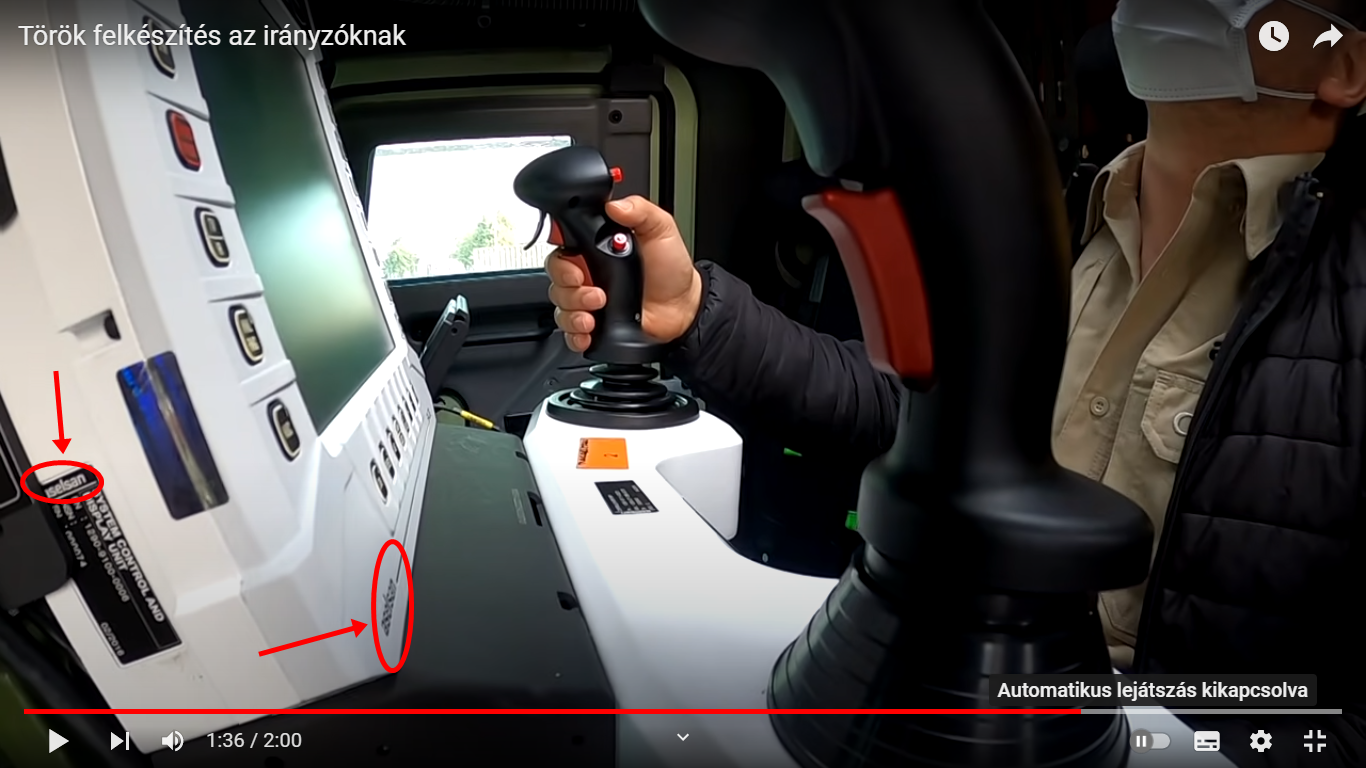The https://english.atlatszo.hu use cookies to track and profile customers such as action tags and pixel tracking on our website to assist our marketing. On our website we use technical, analytical, marketing and preference cookies. These are necessary for our site to work properly and to give us inforamation about how our site is used. See Cookies Policy
Hungary secretly bought remote-controlled weapons systems from a Turkish company
In the latest issue of the Hungarian Defence Forces magazine called “Haditechnika”, a six-page article deals with the weapons of Gidran vehicles purchased from the Turkish company Nurol Makina. The weapon is the SARP system of another Turkish arms manufacturer, Aselsan. However, the army never announced that they had bought SARP for the Gidrans. In fact, in 2020, the then Defence Minister said that they had not bought anything from Aselsan, even though the company’s accounts showed a contract with Hungary. The number of units and the price are unknown because the purchases have been classified by the government for 30 years. The Ministry of Defence did not answer our questions, but after a long search we found Aselsan’s logo in one of the Ministry’s promotional materials.
The purchase of the Gidrans is also a confusing process: it has not even been disclosed how much the armoured fighting vehicles produced by the Turkish Nurol Makina cost. However, a company owned by two oligarchs close to Orban and Erdogan is involved as an intermediary in the purchase. It is probably no coincidence that all Turkish military procurement has been classified for 30 years by the Fidesz government.

In our story published in October, we described the military-industrial cooperation between Hungary and Turkey. The largest project is the purchase of the armoured vehicle Ejder Yalcin produced by the Turkish Nurol Makina. In Hungary, the vehicle is named “Gidrán” after a Hungarian horse breed.
Hiding the price of Gidrans
According to an official announcement in late 2020, the Hungarian Defence Forces ordered 10 Gidrans in 2019 and will order 40 more. According to the announcement, the long-term plans include the purchase of 300 vehicles, which would be produced at least partly in Hungary, in Kaposvár, in a Hungarian-German-Turkish cooperation, under a Turkish licence.
The piquancy of the purchase is that the Defence Forces did not buy the Gidrans directly from the Turkish manufacturer, but from an intermediary company, HT Division Zrt., owned by a Hungarian and a Turkish oligarch close to the government in both countries, László Szíjj and Suat Karakus.
Friends of Orbán and Erdogan behind the Turkish purchases of the Hungarian Army
In his 2013 speech in Tusványos, PM Viktor Orbán mentioned Turkey as an example of an illiberal democracy. Since then, Hungary has not only moved closer to Ankara in ideological terms, but trade between the two countries has also increased significantly.
The first ten Gidrans arrived in Hungary at the end of 2020, and in February 2021 they were deployed to Tata, the barracks of the 25th Klapka György Rifle Brigade of the Hungarian Army. At the end of February 2022, when Russia invaded Ukraine, they were deployed to the east of Hungary for training.
But the price of the Gidrans was never mentioned by any official in the Hungarian government. In June 2020, MP Ágnes Vadai of the opposition party DK asked in a written question about the details of the contract with Nurol Makina, the armoured vehicle manufacturer, and the price, but to no avail: the then Defence Minister Tibor Benkő told her that, like the routes of the military aircraft, this information would be kept secret for 30 years for reasons of defence and national security.
Remote-controlled weapon system
A Hungarian military blogger, however, based on the official photos, recognized two Aselsan products on the first 10 Gidrans arriving in December 2020: the SARP remote-controlled weapon mount and the SEDA-V acoustic shot detector.
Aselsan, a Turkish military-owned weapons company, announced on Twitter in 2020 that a NATO member state would buy remote-controlled weapons systems from them. According to the national security news portal Jane’s, Hungary (will be) the buyer, but the article was soon deleted.
In response to the news, MP Ágnes Vadai submitted a written question to the then Defence Minister Tibor Benkő in early May 2020. She asked whether a contract had been signed with the company or whether the Defence Forces had purchased any Aselsan products through an intermediary company. The minister replied with no to all questions.
In contrast, the Turkish company wrote in its 2019 annual report that it was working on an agreement with Hungary, and its 2020 report says that it has not only reached an agreement with Hungary, but has also delivered the SARP systems to the Hungarian Defence Forces.
Advertised on the front page
The cover of the latest issue of the bi-monthly magazine called Haditechnika (Military Technology), published in October 2022 by the Ministry-owned HM Zrínyi Nonprofit Ltd., was dedicated to the Gidrans’ weaponry.
In the middle of the magazine there is a six-page article about the topic, written by three academics of the Hungarian National University of Public Service (NKE), Ferenc Havrilla, István Sebők, Dr. Róbert László Vég. The article describes the capabilities and the different types of SARP (Stabilized Advanced Remote Weapon Platform) produced by Aselsan.
Nowhere in the article is it stated that the Gidrans purchased by Hungary are equipped with Aselsan’s SARP system, although the title (“The Gidran combat vehicle armament”) clearly indicates this. As does the last sentence of the article, which says: “These devices, platforms and turrets have also opened up new possibilities for the Hungarian Defence Forces in the use of both old and newly acquired weapons”.
Fortunately, however, at the very end of the paper, the details of the photos on the cover and poster are honestly printed, so it is clear that the front page shows “Aselsan stabilized remote-controlled weapon platform with 12.7 mm machine gun on Gidran combat vehicles”.
Seeing and reading this, we wrote a letter to the Ministry of Defence at the end of October. We asked the ministry
- the total number and type of Aselsan products on Gidran vehicles,
- with whom and when they contracted for the purchase of Aselsan products,
- the exact number and type of Aselsan products purchased and the amount paid in return.
We also asked how it is possible that Aselsan products are on the Gidrans, even though on 20 May 2020, Tibor Benkő, the then Minister of Defence, said that Hungary had not bought Aselsan products from the manufacturer or from an intermediary. Yet the Company’s 2020 report states that the products ordered were delivered to Hungary. Was the agreement reached after Tibor Benkő’s reply?
Four days after our letter, the press department of the Ministry of Defence asked for a little patience, but they still did not answer our questions.
We found Aselsan in an official video
While we waited hopefully for a response from the Ministry of Defence, we began a long search.
For our October article, we’ve been digging around, but unfortunately we couldn’t find any textual or clear visual evidence of the purchase of Aselsan products. In fact, the company logo does not appear on the device mounted on the Gidrans as it does in the company’s promotion photo, and there is no close-up, high-quality image of them even in the state news agency’s database. There is no textual description of the weaponry and the name of the Turkish company does not appear in any official communication.
We have now expanded the search and have looked through all the photos and videos from the last 3 years on the Facebook pages of the Ministry of Defence, the Hungarian Defence Forces, the former and current Defence Ministers, various State Secretaries and Defence leaders, as well as the government and Defence Forces websites. We were hoping that they might not have been so careful with the visual content and we would find the Aselsan logo somewhere.
After looking at thousands of Facebook posts, photos and videos, we finally succeeded: on the website of the Ministry of Defence (honvedelem.hu), we found a story from April 2021, which says that the Gidrans’ commanders received Turkish training. In the photos attached to the article, you can see the Aselsan logo on the weapons and on the Turkish instructor’s clothing:
And the promotional video of the training makes it even clearer that the company’s SARP system is on/at the Gidrans:
There are two possible explanations:
- either they signed with Aselsan after Tibor Benkő’s denial,
- or they had already ordered and bought Gidrans from Nurol Makina (through HT Divison Zrt.) together with the Aselsan products.
The third option could be that Benkő lied to Vadai when he denied Aselsan procurement, but as Minister of Defence he probably did not do that in a sealed, written parliamentary reply.
More Turkish contracts possible
On 24 October, Defence Minister Kristóf Szalay-Bobrovniczky visited Turkey, where he held talks with Turkish Defence Minister Hulusi Akar. According to a report available on the government website, “a Memorandum of Understanding was signed to establish the legal basis for future military cooperation between the two countries”.
The next day, Szalay-Bobrovniczky visited the Nurol Makina factory, where he looked and tested the armoured vehicles produced by the company. In a statement, he said that “40 more of these four-wheel drive Turkish base vehicles will arrive in Hungary by the end of 2023. These will be fitted in Kaposvár with the equipment that will create the Hungarian thoroughbred of the military profession, the 21st century successor to the Hussar horse – the Gidran”.
The Minister posted a video about the factory visit on his Facebook page, showing him receiving a Gidran maquette as a gift from Nurol. More interestingly, however, the display behind him shows a summary of the contracts at the time of the presentation. Although the quality of the video is not very good, it shows 7 lines on the screen, which means that this is how many contracts may be in progress and/or planned between the Turkish factory and the Hungarian Defence Forces.
Szalay-Bobrovniczky’s trip to Turkey was not an ordinary one. The online news portal Népszava reported that the minister attended Prime Minister Viktor Orbán’s speech in Zalaegerszeg on 23 October, and then an Airbus A319 aircraft of the Hungarian Defence Forces was sent to Sármellék airport near Zalaegerszeg to avoid him a 270-kilometre drive to Kecskemét, the military aircrafts’ base.
Written and translated by Katalin Erdélyi. The original, Hungarian version of this story can be found here. Cover photo: Minister of Defence Kristóf Szalay-Bobrovniczky in a Gidran armoured fighting vehicle on the recruiting day of the Hungarian Defence Forces at Heroes’ Square on 16 October 2022. Credit: MTI/Szilárd Koszticsák


